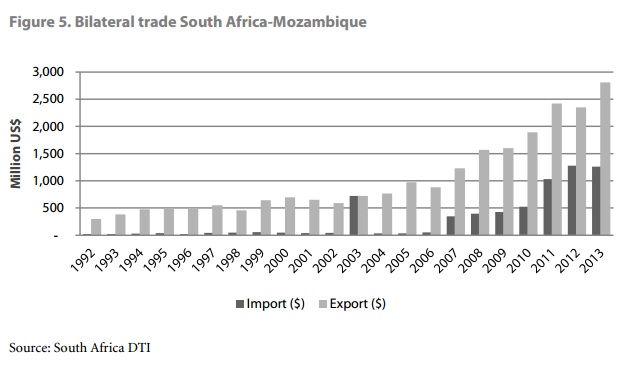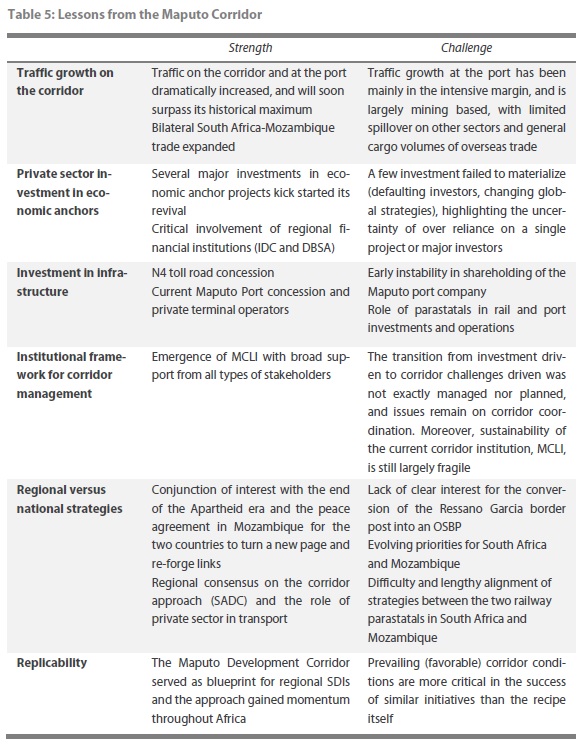News
Reviving Trade Routes: Evidence from the Maputo Corridor

Most trade moves along a few high-density routes: the corridors. Improving their performance has emerged as a necessary ingredient for growth and integration into the regional and global economy. In Africa, this is recognized at the continental level, where PIDA for instance, the Program for Infrastructure Development in Africa, has identified 42 corridors that should form a core network for regional integration and global connectivity.
Several distinctive features appear to be necessary conditions for a successful corridor, namely (i) a combination of public and private investments to improve infrastructure, (ii) an institutional framework to promote and facilitate coordination, (iii) a focus on operational efficiency of the logistics services and infrastructure, and (iv) a proven economic potential. However, the presence of all the ingredients is not a sufficient condition: it is critical to also make sure that the fundamentals are appropriate and in sync and their management and coordination are sound.
Reviewing the experience of an apparently successful corridor can help us learn the optimal mix and trade-offs among the ingredients and enable replication of success on other corridors. The Maputo Corridor, which had fallen in disuse during the troubled period in Mozambique, is widely regarded as one the successful corridors. It has experienced tremendous growth, attracted large industrial and transport investments, and strengthened ties between neighboring countries over its almost two decade long history since the end of the apartheid era in South Africa and the Peace Agreement in Mozambique. What makes the Maputo Corridor ideal as a source of learning lessons is that it has many contrasting facets – it is an established trade route with a development focus, as well as an hinterland corridor, a mining and resourcebased corridor – whereas other corridors may have a far less diverse nature. The lessons that can be learnt from the Maputo Corridor thus have relevance for a wider variety of corridors.
The lessons from the Maputo Corridor can help the regional economic communities (REC), countries, corridor users and development partners to better focus their corridor strategies to maximize economic growth. The present work focuses on three aspects of its revival:
-
Corridors as enablers of trade and economic development
-
Improvement of logistics through investments and reforms
-
Institutional framework adapted according to objectives
Featured infographics
Opening up the corridor for trade had not only a positive impact on the transit trade flows (translating mainly in railways and port levels of activities), but also on regional trade, notably between South Africa and Mozambique. The dominant trade flow is from South Africa to Mozambique, and consumers in Maputo can now find everything that used to be available only in South Africa. However, exports from Mozambique, which were negligible, have picked up, and average now half of the value of imports.

Several of the original objectives of the Maputo Corridor revival have been achieved: (i) the current traffic activity of the railways and the port has reached the pre-independence levels, and prospects for sustained growth are bright, with increasingly well integrated markets (regional trade has expanded and any consumable that can be found in South Africa is now available in Mozambique); (ii) the core corridor transport infrastructure has been rehabilitated and expanded, with a port that will see its capacity double over the coming years, with sustainable funding to maintain the road infrastructure, and with commitment from railways parastatal to develop rail services and capacity; and (iii) private sector investment in large economic anchor project has been realized.
However, on a few other counts, the corridor is a work in progress and the results are not yet clear. A case in point is the institutional framework for the corridor, which has not evolved as initially planned. Rather there has been adaptation and the emergence of pragmatic solutions. When the investment-driven phase failed to evolve, it left a void that had become detrimental to the proper functioning and further development of the corridor.





